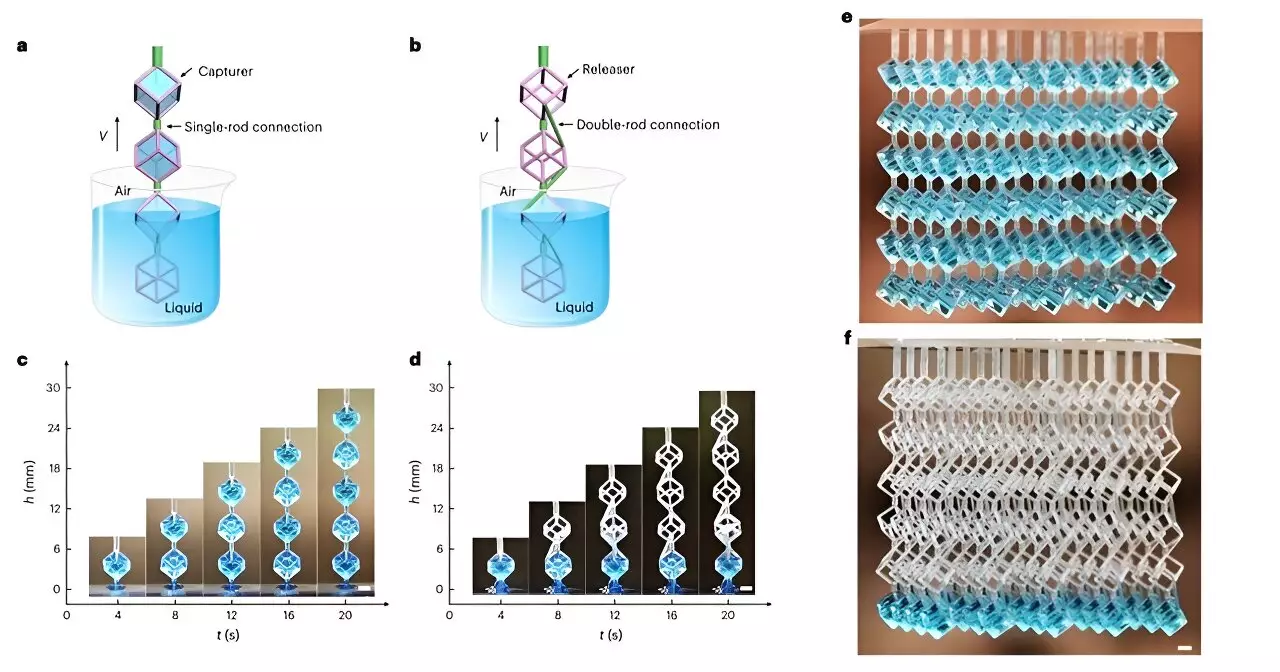Fluidic technologies are integral to numerous industries, ranging from healthcare and pharmaceuticals to chemical processing and environmental management. The intricate challenge of managing fluids—capturing, transporting, and releasing them with precision—has prompted ongoing innovation within this field. Recently, researchers at The Polytechnic University of Hong Kong have introduced a transformative approach to fluid management through their invention of Connected Polyhedral Frames (CPFs). This new type of fluidic processor promises to redefine how we manipulate and control various liquids.
In contemporary applications, fluid manipulation is critical. Yet, the existing technologies often fall short, resulting in various issues such as sample contamination, inaccurate dosing, and inefficient use of resources. Traditional methods of fluid handling heavily depend on materials such as pipettes and microtubes, which, while functional, generate significant plastic waste and can compromise fluid integrity due to incomplete transfer. This environmental impact raises pressing concerns about sustainability in scientific practices and healthcare industries.
CPFs address these shortcomings effectively. With their innovative design, CPFs facilitate the reversible capture and release of liquids in a manner that is both programmable and adaptable. This distinguishes them dramatically from conventional methods, providing a solution that not only improves efficiency but also minimizes waste.
At the heart of CPFs lies a unique structural concept that enhances their fluid handling capabilities. They consist of interlinked polyhedral frames that can manipulate liquids through a combination of capillary action and controlled liquid continuity. The researchers have optimized the frames to allow for efficient liquid retention and drainage, addressing some of the critical limitations associated with fluid transfer in traditional devices.
When configured correctly, one set of frames can grab and hold liquid while another set releases it, operating independently of their structural materials. This versatility enables CPFs to accommodate a wide range of fluids, including biological samples, organic solvents, and various chemical compounds. This functional independence represents a leap forward, yielding a broader application scope than previously possible.
The potential applications for CPFs are vast. In the biomedical realm, for instance, the ability to precisely control the release of drugs has critical implications for targeted therapy and personalized medicine. The research team demonstrated this by successfully using CPFs to create a dual-release system for vitamins B2 and B12, allowing for a controlled and efficient delivery mechanism. This level of control is particularly crucial when managing polypharmacy, where multiple medications must be administered simultaneously at specific dosages.
Beyond pharmaceuticals, CPFs have shown promise in microbial applications, such as encapsulating bacteria for bioprocessing. By improving separation techniques within microbial reactions, CPFs can enhance the production of valuable biological products, highlighting their utility in both industrial and laboratory settings.
Moreover, the researchers’ exploration of CPFs extends to environmental applications, such as enhancing CO2 capture and storage processes. Their design’s capability to optimize gas-liquid interactions could contribute to vital climate change mitigation strategies, making them a promising tool in sustainable technology.
The introduction of CPFs is not merely an incremental improvement; it represents a paradigm shift in fluid manipulation technologies. As these processors become more widely adopted, they could pave the way for future innovations in multiple fields, including chemical engineering, environmental science, and even energy management. The implications for resource efficiency and waste reduction are significant, particularly given the pressing need for sustainable practices across industries.
Furthermore, the concept of CPFs as meta-metamaterials opens new avenues for research and development. This unique class of materials could inspire further advancements in fluid management, leading to novel applications and solutions to existing challenges.
The development of Connected Polyhedral Frames marks a significant milestone in fluidic technologies, promising increased control, efficiency, and sustainability in liquid management. As researchers continue to explore their vast potential, CPFs may reshape the landscape of how we approach fluid handling—from laboratories to large-scale industrial applications. With this innovative approach, the long-sought goal of collapsing barriers in fluid transfer and management seems closer than ever, heralding a new era of scientific and technological advancements.

